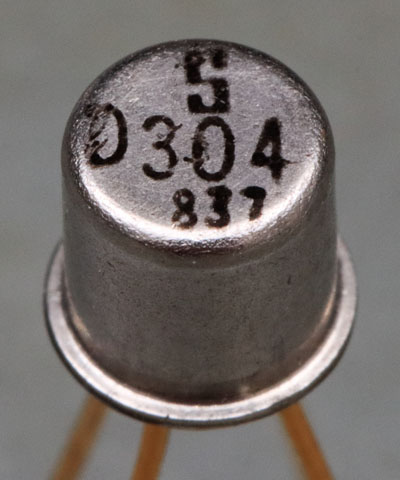
The Signetics SD304 is a dual-gate n-channel MOSFET. It is a DMOS transistor. The gate electrodes are protected against overvoltage by Zener diodes. In addition to the SD304, the datasheet also lists the SD303, the SD301 and the SD300. These are probably different bins. The SD304 can be used at frequencies up to 1GHz. It blocks up to 25V and conducts up to 50mA.
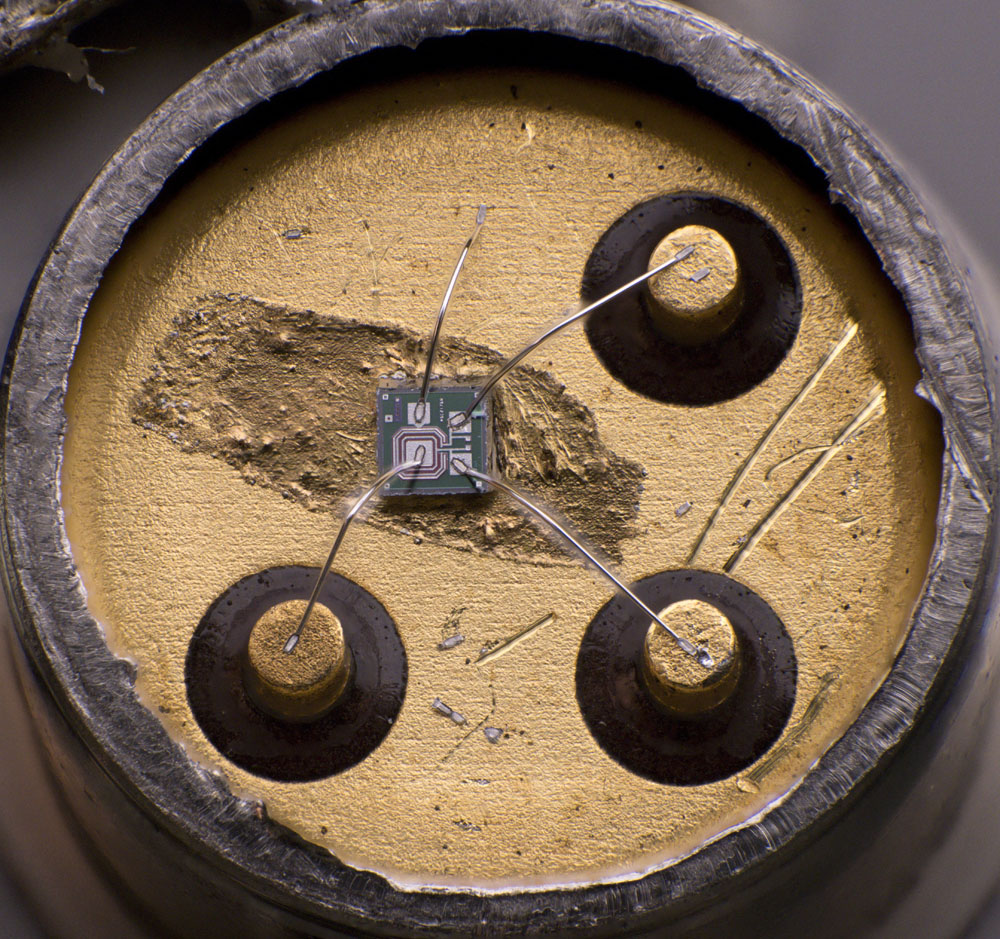
Several scratches and remnants of bondwires can be seen on the bottom of the SD304 package.
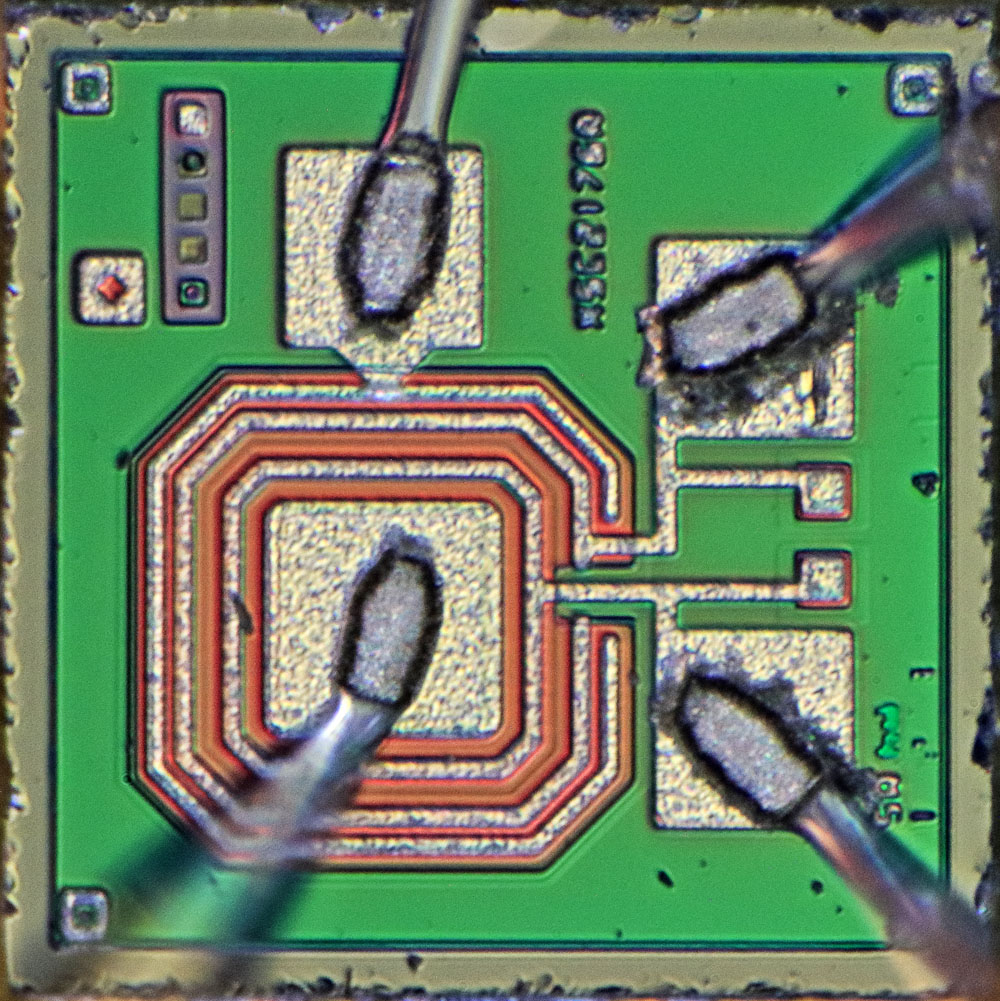
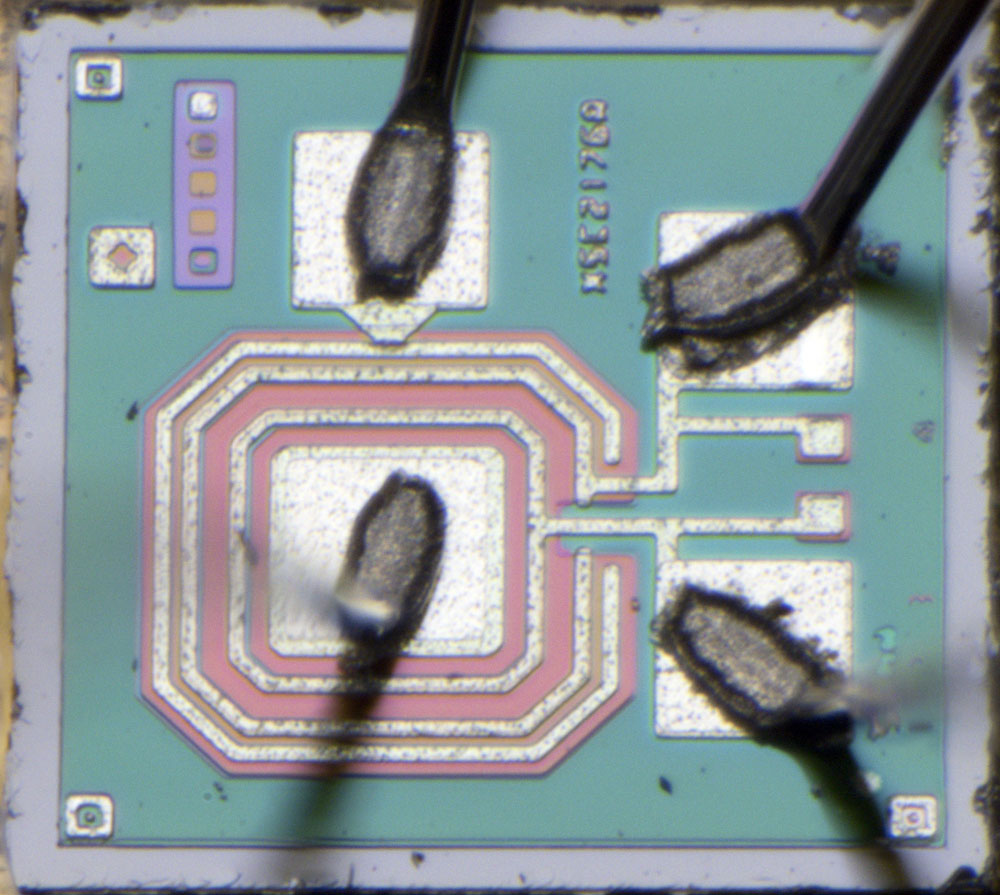
The edge length of the die is 0,50 mm. Square structures in the corners make it easier to place the masks. The auxiliary structure in the top left-hand corner makes it possible to check the alignment of the masks against each other after production. On the right edge, numbers appear to be shown in different levels. However, the characters are so small that the process could not work them out cleanly. There is a string of characters in the upper area. This could be an internal project name.
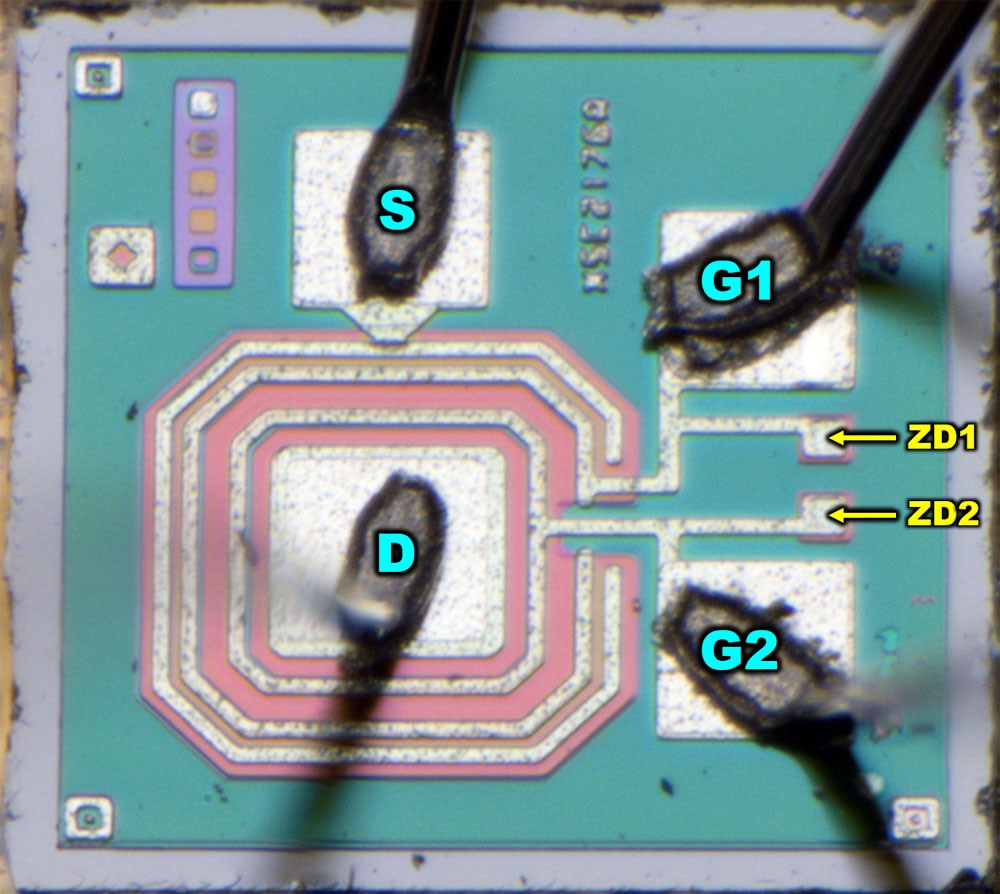
The MOSFET structures are clearly visible. In the center is the drain potential, which is surrounded by two gate electrodes. The outermost ring transmits the source potential. The two protective diodes are integrated at the right-hand edge.
The structures are similar to those in the SM200 (
https://www.richis-lab.de/FET45.htm), but here the additional strips that increase the active area are missing. This has a noticeable effect on the transconductance. While 12-24mS are specified for the SM200, the SD304 is specified with just 10mS.
https://www.richis-lab.de/FET48.htm 